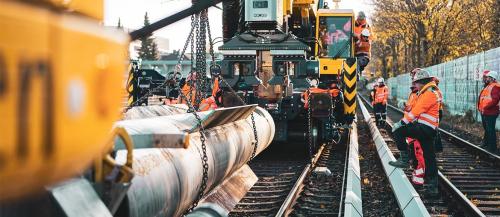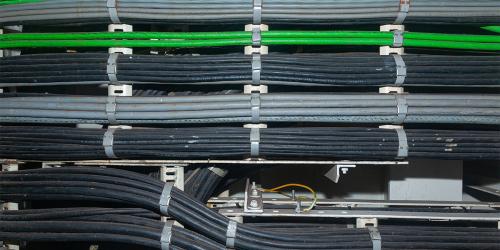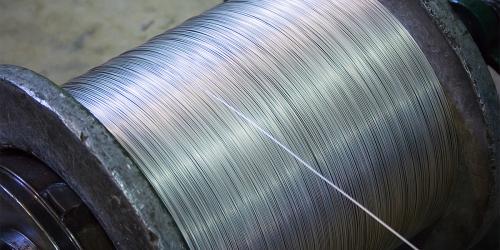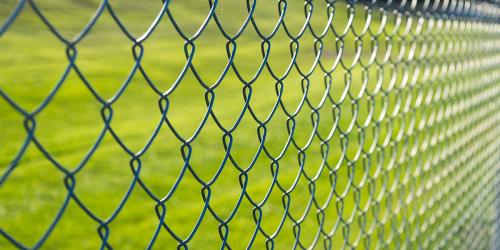As a supplier of durable, long-lasting building materials and fixings, we are always looking to introduce new products to diversify our collection and offer even better assistance for our customers. One of our latest additions is our steel bed joint reinforcement ladders (also known as masonry reinforcement ladders), which are great for enhancing the strength and durability of brick/block walls.
With many new products, there will usually be several questions that follow, usually asking about what it is and how beneficial it can be. In this blog, we will provide informative answers to frequently asked questions about bed joint reinforcement; so that, by the end, you will have a better understanding of its function and benefits, as well as why and when to use it.
What is a Bed Joint in Construction?
In construction, a bed joint refers to the horizontal layer of mortar on which masonry, such as bricks, are laid, acting as the surface that supports the weight of the next layer. Bed joints are crucial in distributing loads evenly across a structure and to help bond the individual units together, helping create a strong and stable masonry wall.
What is Bed Joint Reinforcement?
Bed joint reinforcement refers to steel wire or mesh, usually being horizontally embedded within the mortar joints in between the layers of masonry bricks or blocks. Typically, bed joint reinforcements consist of two parallel wires that are connected by cross wires, forming a ladder shape. The extra endurance provided helps distribute loads more evenly and can control cracking that is caused by shrinkage, temperature changes, or external forces such as wind.
When is Bed Joint Reinforcement Required?
Bed joint reinforcement is required in masonry construction under specific circumstances to enhance structural integrity and reinforce potential stress points. Here are some of the instances that indicate when bed joint reinforcement is needed:
1) Increase Structural Support
These reinforcements are typically required to provide structural support, especially in areas where walls may experience higher amounts of lateral forces such as winds. This includes multi-story buildings, retaining walls, or masonry structures built in coastal areas.
2) Crack Control
In masonry, cracks can occur because of temperature changes or the natural shrinking of materials over time. Supporting the bed joints can help distribute stress more evenly, reducing the risk of cracks forming.
3) Openings and Weak Points
Openings such as doors and windows especially need to be reinforced, as the areas of masonry surrounding them will naturally be more exposed to movement and stress. The use of bed joint reinforcement ladders can help maintain the strength of these areas, resisting against cracks or displacement.
4) Different Settlements
When buildings are constructed on different types of soil or foundations, there can be uneven settling, potentially causing stress on the walls and increasing the chances of cracking, fractures, or other forms of damage. Bed joints can be used to counteract damage caused by differential movement.
How Thick Should a Bed Joint be?
The thickness of these joints can vary, as factors such as the type of construction and materials used must be taken into consideration, but for brick masonry, bed joints should be around 6-9mm thick. The joint should be thick enough to support the structure without protruding from the mortar.
Where Can They be Used?
Bed reinforcements can be used for a wide range of masonry applications, such as in residential housing, commercial buildings, and apartment complexes.
Where to Find Strong Bed Joint Reinforcement?
You can find strong and durable bed joint replacement ladders right here on our website. We have recently added these to our lineup of handy building materials in our bid to help you get going on your next construction activity.
About our Stainless Steel Bed Joint Reinforcement Ladder
High-Quality Construction
Our bed joint ladders are made from high-quality stainless steel, making them excellent for withstanding corrosion and remaining strong for a long time.
Versatile
These ladders come in a standard length of 2.7 meters and are available in a number of wire diameters, making them suitable for various brick/block widths.
Easy to Install
Our bed joint ladders are also relatively easy to install, making them a convenient solution for reinforcing your brickwork walls.
Fast Delivery
We offer next-day delivery for our most popular sizes, and for our less-popular ones, we offer quick turnaround times so that no matter what size of brick reinforcement you need, you can get the job done fast.
BS Fixings aims to provide a range of dependable building materials to help you build stable structures that will stand the test of time. From wall ties and compression sleeves to our new bed joint reinforcement ladders, our array of building materials is ever-evolving to fit your construction needs. Be sure to browse our full range of building materials today or call us on 03330 117818 if you have any questions.






